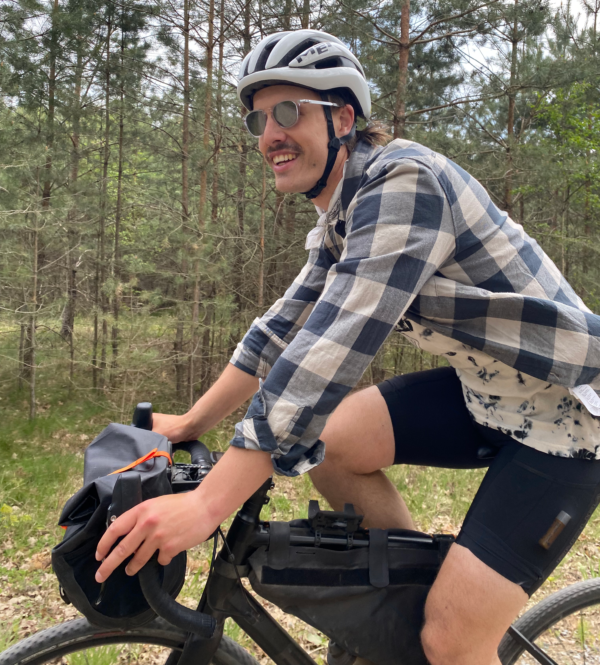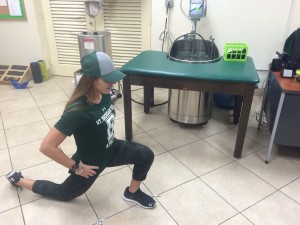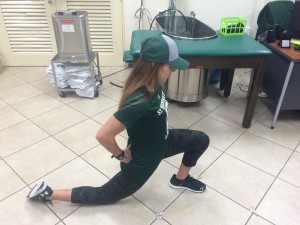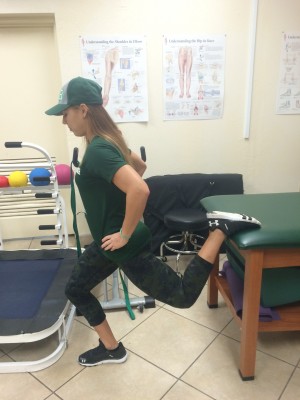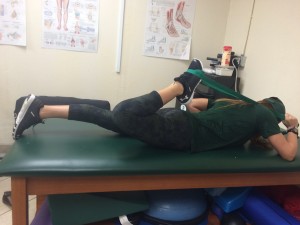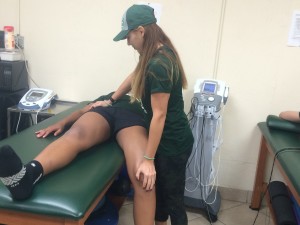Introduction
Cycling is a sport that we and many others around the world take pleasure in as part of a regular exercise routine and healthy lifestyle. There’s nothing worse than being debilitated by an injury or pain that prevents you from doing the thing you enjoy, and that’s exactly the situation so many of our fellow cyclists find themselves in.
The hips are a major focus point when it comes to cycling as it’s where the bulk of our power first originates in the pedal stroke. Unfortunately, many people start to feel hip pain in the cycling position or afterwards when they get off their bike.
This article will help to detail some of the hip flexor muscles that contribute to cycling, and how common causes of hip pain in cyclists can be remedied to continue enjoying the activity we all love.
What Are Hip Flexors?
The hip flexors are a group of muscles responsible for, you guessed it, flexing the hip (i.e. bringing the knee towards the chest). This group is mainly composed of the psoas, iliacus and rectus femoris muscles. Several other muscles have a ‘hip flexing’ quality to them, however when it comes to hip pain from cycling, we’ll primarily be talking about these three.
Iliopsoas
Source: Physiopedia
Iliopsoas is a group of two (sometimes three) hip flexor muscles: psoas major, psoas minor and iliacus (the psoas minor is only present in a certain number of people). These muscles have distinct separation in the abdomen but consolidate as they move downward into the thigh, contributing to the same hip flexing function, and thus their common grouping in the term iliopsoas.
As we’ll see, the psoas in particular is a major player in anterior (front) hip pain after or during cycling. Being the most powerful hip flexor and the only muscle that connects your upper body to your lower body, it has a significant influence on the biomechanics of cycling.
Rectus Femoris
Source: Kenhub – Illustrator: Liene Znotina
The rectus femoris is a quadriceps muscle that runs straight down the middle of the thigh. It is the only quadriceps muscle that crosses the hip joint, which gives it its hip flexing function. Rectus femoris also crosses the knee joint, making it a forceful contributor to cycling in general through its dual action of knee extension (power phase) and hip flexion (recovery phase).
How Do Our Hip Flexors Contribute to Cycling?
Cyclists and runners have something unique in common. They tend to think about (and train) the downward forces applied into the ground or pedal far more than the ‘pulling’ forces that allow them to regain position for the next repetition. This can be detrimental in terms of injury risk and performance, because only half the movement is being trained!
Source: Active For Life
Our hip flexors are mainly responsible for the last part of the recovery phase (10 to 12 o’ clock pedal position) during cycling. By using the hip flexors to ‘pull’ us through the final part of our upstroke, we can effectively utilize the force generated in the power phase and assist in creating an overall more efficient stride.
While cycling, many people are so focused on their thighs that they forget the entire leg is (or at least should be) working through the different parts of each pedal stroke. Fatigue tempts cyclists into relaxing during the 6 to 12 o’ clock position, but in doing so they leave a lot on the table in terms of output and will also overwork other muscles in the process.
Causes of Hip Flexor Pain During/After Cycling
There are usually several culprits responsible for the pain cyclists feel in their hip flexors during or after a ride. They tend to contribute to one another making the problem hard to diagnose and rectify. Though just as the issue tends to be multi-faceted, a given treatment protocol will often have overlapping benefits as well.
Here are some common causes of hip pain in cyclists and how best to approach them.
Source: Coen van de Broek
Poor Posture
Cycling puts your body into a terrible position. There’s lots of talk online about getting into a “good” or “better” position, and it is certainly something you can improve (with a proper fitting for example). Nonetheless, hunching over on a bike is not ideal for the following reasons:
- Tendency to round the upper and lower back
- Shoulders rounded forward, compressing the chest
- Breathing is compromised
- Neck is craned back
- Hips stay in a flexed position and never fully extend
- Pelvis is largely immobilized
Source: Jacek Dylag
While cycling, your hip is in a constant state of flexion, even when riding out of the saddle. The psoas muscle attaches to your femur and all five lumbar vertebrae. If the psoas muscles get tight and shortened from this constant flexion, they’re going to pull on these vertebrae and increase the curve in your lower back, creating what’s called lumbar lordosis.
Source: PhysioLogic
This leads to several problems. The lumbar discs are now compressed, your pelvis tilts forward (compromising movement of the femur head) and you’re likely to feel stiffness, ache and pain in the front of your hip from a short and aggravated psoas.
An immobilized pelvis due to the sitting position on your bike also contributes to this problem. The pelvis naturally tilts back and forth as you move, as well as some slight rotation between its two halves. The seated position on your bike takes away the majority of this tilting and already minimal rotation, stagnating the hips.
Treatment
Alleviating the hip pain you feel from spinning or cycling could be as easy as doing some simple stretches! By targeting the hip flexors through stretching you’re proactively treating and correcting the poor position cycling puts you in. And if you’re already in pain, this might be a great place to start to get you back on the bike.
Here is a hip flexor focused routine for you to try. Or check out these easy hip stretches for cyclists that target the back, front and side of the joint. Stretching will help combat the tightness created through cycling and several other activities that have become a part of our lives, such as sitting and driving.
Weakness
On the bike, your hip flexors are trying to work in a mechanically disadvantaged position. Having the trunk folded over your lower body is not optimal for force production, and is basically the opposite posture than that of a sprinter (the athletes with the largest and most powerful hip flexors).
Source: BBC
It’s almost unimaginable how many times your hips will flex while cycling. Thousands and thousands of repetitions. If the hip can’t fully flex as a result of weakness/fatigue, your body will compensate by looking for that flexion farther up the chain in your back and side. This can lead to overuse and injury of muscles trying to do an action they’re not designed for.
Treatment
There are several ways to strengthen the hip flexors and condition them for cycling. Any exercise that lifts the knee towards the chest will work the correct muscles. Many core exercises also train the hip flexors, particularly ones that move the legs. Knee raises and leg lifts, when done properly, are a great combination for core and hip flexor training.
Further, a number of factors could be inhibiting and weakening the hip flexors. Having the wrong size of bike could be putting your hips into a bad position, so it’s important that this is checked and fitted by a professional. Stretching your glutes might also be helpful, as tight glute muscles will fight the pull of your hip flexors every time they try to fire.
Overuse
We as a cycling community often drift toward the masochistic when it comes to our training regimens and discipline towards recovery. Long hours on the road, early morning spin classes, and intervals all mix up a dangerous cocktail. Or how about the elusive “recovery ride” that promises to refuel but instead turns into a full blown workout. We’ve all been there.
Many turn to cycling because it has a reputation for being low impact. Fortunately or not, that allows us to do it…almost all the time. As previously mentioned, the positions we find ourselves in on the bike tend to compromise our bodies, especially the hips, potentially risking injury long term.
Treatment
Remember the rectus femoris? It’s the big quadriceps muscle that crosses both the knee and hip joint. It gets tremendous activity during cycling through its dual functions of knee extension and hip flexion, and is one of the tissues most vulnerable to the excessive nature of our sport. Light foam rolling or massage over this area could provide some much needed relief.
In general, just taking some time off. We know that might be the last thing some of you want to hear, but consider this: The more you like to ride, the more you need to learn to take care of yourself. Proper strength training, nutrition and rest. Luckily we have plenty of resources to help you do all those things and more.
So, Is Cycling Bad For Your Hips?
Well, it doesn’t have to be! Take this for example. It is common practice during physiotherapy after a hip replacement to integrate cycling into a person’s recovery. For the same reasons cycling leads us to pain (immobilized pelvis, hips don’t fully extend), we can use it as a regenerative practice that heals and restores function to the joint.
Finding balance is what’s important. Not just in your training volume, diet and rest, but also the length and strength of your muscles. Or the time spent folded on a bike versus being on your feet with your head up and shoulders back.
Hip Rehab Program for Cyclists
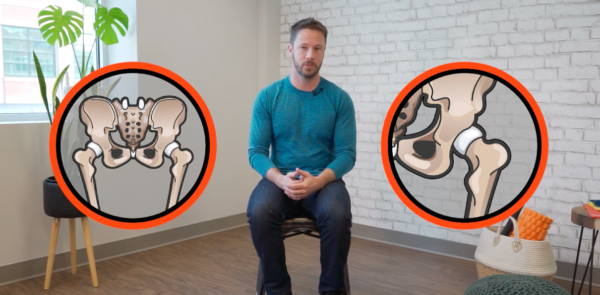
Cycling is a great activity that can be part of a healthy, active lifestyle. However, if you are suffering from pain or discomfort while riding check out Dynamic Cyclist. This comprehensive resource addresses the most common muscle imbalances and adaptive muscle shortening that lead to pain and reduced performance on the bike. With just 15 minutes a day, you can follow along with the video programs to alleviate tension and improve posture, so you can ride pain free and reach your full potential on the bike. Don’t let muscle imbalances hold you back. Try out their 6 Week Hip Function & Rehab Program and experience the results for yourself. Click here to try 7 days free!
